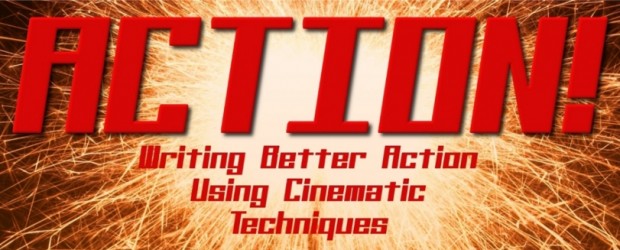This is from a fantasy WIP. Abbreviated backstory: Sorcha is a sort of Paladin, hunting down an evil warlock. She finally tracks him down at the edges of a reef where a half-drowned ruin lies buried in mud and encroaching tides. Her goal is to capture him and prevent his escape.
***
Where was the vile man? Sorcha could feel the cold trail of his soul’s hate snaking through the waterlogged reeds, deeper into the muddy stones of the drowned ruins. She stretched out her feelers and traced the trail to a giant column of stone rising out of the muck before her. He was there, and she could feel his hunched form coiled around his soulfire. A gentle lapping of turgid water hissed against the stone.
Ah, I have you now, she thought, and hiked up her shield. She stepped towards the column, muddy water sloshing against her knees. His soulfire waited, drawn up inside him like a ball of snow with a core of ice. She tightened her hold on her wooden shield, hefted her sword, and stepped around the megalith.
The man lunged himself at her with a shrill shout, a kris aimed at her head. She threw up her shield arm and gasped as the full weight his body slammed against her shield. She heard a dull thunk as the kris cut into the wood. She yanked it back, tugging the warlock off-balance, and kicked him in the knee. He yelled and stumbled back, cursing. “Bare-faced bitch!” [This is quite simply a very good start to a fight scene. The pacing is good and the description of action is fast-paced and detailed without being overbearing.]
He pulled on his soulfire and Sorcha’s senses shrieked alarm. Her nerves buzzed, and pain shot up her arm and down her back. [Maybe it’s because I haven’t read more of this story to understand it, but I’m confused by the whole “pulling on the soulfire” thing which is somehow injuring Sorcha.] “Oh no, you don’t!” She said and threw herself at him, sword aimed at his hip. [A paladin and professional warrior wouldn’t be aiming for a hip unless she didn’t want to kill him immediately. If she wants him dead, she should ALWAYS be going for a fatal blow if she can, which means head or heart.]
Ice froze her Core, and a blue ball of Fire exploded into the air, engulfing her head and chest. [Is this a result of her attacking him? That’s unclear.] She screamed. The Fire burned and flayed with whips angrier than any desert wind. She toppled onto the warlock, and they hit the water, sinking under the silky dark shallows. The fire winked out, but the burn continued on, consuming her nerves, steaming under her skin, scraping her senses raw. The warlock thrashed under her, and his knee slammed into her thigh. She gasped and choked. Focus, Sorcha! She bit her lip and pushed him down under her into the thick bed of mud and weeds. He gurgled and struggled against her, hitting her in the ribs with his fists and elbows. Her lungs tightened for need of air and she pulled him up with her, gasping. [This is a good series of stunts here, but Sorcha has now gasped three times in two paragraphs. See if you can find some other words to describe her reactions.]
He coughed and gasped, [gasp #4] flinging himself away. She grabbed him [If he just flung himself away, she needs to pursue him first for continuity.] by the hair and punched him hard on the nose. [What happened to her sword?] Bones cracked under her fist, and blood exploded on his face. He howled and retaliated with a boot to her gut. [A knee would make more sense in a close combat like this. A kick is a long-range attack and Sorcha is right up in his face.]
She doubled over, coughing, and the man hit her on the back, sending her back into the water. Churned mud funneled into her mouth. Gagging, she pushed herself out of the water, spitting curses. The warlock ran away, down towards the shore, where a tall strand of slime-covered rocks stood as bulwarks against the sky, and a small skiff bobbed on the breaking waves.
Cursing, Sorcha ran after him, even though her face and lungs burned, and her back ached, throbbing with a new-made bruise. She reached for her sword, but came up empty. Fires! She must have dropped it into the mire during the fight. [She should already know she lost her sword when she was forced to punch at him.]
The cursed man had almost reached his ship. She unbuckled the shield from her arm and yanked out the kris. She flipped the wooden disk, holding it by the sides. She twisted her body and flung the shield at the fleeing warlock’s back, sending it spinning through the air. [A little redundant here – either she flung it or sent it spinning through the air. You don’t need to say both.]
The edge of the shield hit him between the shoulders and he stumbled. His head hit the edge of the boat’s gunwale with a dull crack. He bounced off the wood and crumpled into the sands, the tide washing over him.
[This is an outstanding scene. The combat is crisp and clear, and you keep up a great pace throughout the sequence. Make sure your continuity is solid, especially involving the sword. Also, think carefully about the distances involved in close combat and whether your characters are at close range – “kissing distance”, medium range – “punching distance”, long range – “kicking distance”, or out of range. Other than that, great job!
Thanks for your submission!]
